Organic Weed Control
How to Kill Weeds with Homemade weed killer and other Natural Methods
A statement of fact is that you can't prevent weeds 100%.
But it is a fact that you can limit, control or kill most of these unwanted trespassers with a homemade weed killer or other organic weed methods.
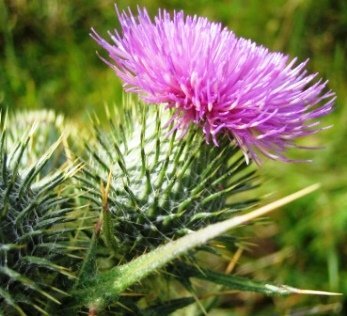
Politicians love to say, "The fact is..." Which gets us suspicious because proven "facts" are often the last things you can find.
With weeds though we have ways and means... natural, easy and safe. Fact is we've proven it.
Now it's over to you...
Read on or skip to these recommendations. . . .
Change your soil to fix your weed problem—See main page on Garden WeedsSmothering weeds
Vinegar as a homemade weed killer
Boiling Water to get rid of weeds
Flame and steam to kill weeds
Oil to eradicate weeds
Hand or hoe for organic weed control
Other natural weed control methods (chickens, tilth, solarisation etc.)
Corn gluten to stop weed seeds growing
Doubtful or dangerous dudes for killing weeds
Organic vs Chemicals
Organic weed killing methods are 'contact' killers. They work by destroying the plant matter that they touch. Do this enough and the weed has no greenery to carry out photosynthesis—it starves to death.
Chemical weed killers are mostly 'systemic'. They are absorbed or taken up by the plant and work from within, destroying and killing the whole plant, roots and all.
NOTE: There are living things in the soil and I know you care about them because you are an organic gardener reading this page.
Good on you... keep our wriggling, scurrying, multiplying beneficial soil friends safe by following these few basic steps when you use organic weed control methods:
- Sometimes it's hard to pull or dig out weeds in paths or hard to reach places, and that's when most of these natural weed zapping ideas are useful.
- Use these methods judiciously, both to keep weeds from competing with your good plants and for a tidy property. Tidy, who cares, you exclaim! But remember, one weed seeding is as bad as two love-struck rabbits...
- Horrible monster weeds, such as gorse, blackberry, huge thistles and the likes, are best tackled first by cutting down as much as you can and then using one of these organic weed killing methods on the regrowth, over and over if necessary.
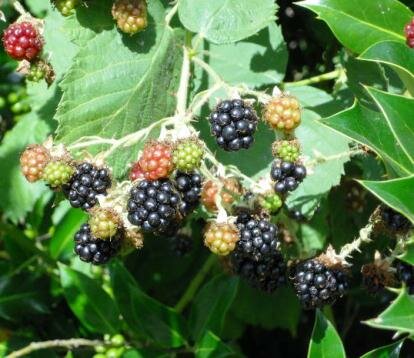
- For plants with long tap roots, such as dandelions and docks; and for hardy plants with a large root spread or rhizomes, such as some grasses and creepers, you will need to attack any new growth after the first assault. This may mean several applications or multiple goes throughout summer.
- Choose a calm, sunny day with no rain forecasted. Spray drift from a breeze can be sad, and the hot sun helps certain sprays, especially vinegar, to burn into the plants.
- Cover over, or peg/tie back any nearby plants you DON'T want to harm. If there's any possibility of spray or splashes, better to be safe than sorry.
- Attack the weeds only, avoiding the soil as much as possible. Spraying or burning the center or growing tip and sometimes the tops of the leaves is enough—no need to spray the undersides as you will probably do damage to surrounding plants and ground.
- You also don't want to unnecessarily kill insects, such as in mid-summer when native bees zip and hover over the ground, then dive down with their load of pollen where they've laid their eggs into their little round holes they've dug out—very often in the fine soil between cracks in pathways.
Smothering Weeds
Unflappable, cool gardeners don't want to change the world; they just want to practice natural, easy ways to grow stuff. They like to get their hands in the dirt and they like to smother weeds before they become a problem.
HOW to be a weed smotherer
- Follow the no dig principles on this website. The basis of no dig gardening is to follow Mother Nature's way and care for the soil from the top down. This almost gives you a weedless garden with a minimum of effort to fix any maverick stray weeds.
- Disturb your soil as little as possible, otherwise you will change the natural layers and bring up dormant, buried weed seeds. These will perk into life when they see light and feel air.
- Keep to paths and stepping stones. As well as keeping your soil aerated by not treading or wheeling things on it, it stops seeds being deposited there from traffic.
- Smother with mulch at least yearly. Use the organic mulch recommendations that you have available... paper, compost, leaves, and so on.
- If feasible, lay down drip irrigation so that water goes to plants roots and not all over the surface of the garden and paths.
- Smother by overplanting—planting ground covers in flower gardens is a great way to fill up any bare spaces between your ornamentals.
In the veggie garden do the same. Plant some low growing companion plants, such as nasturtium or alyssum between your larger vegetables.
Plant herbs, strawberries, vines and quick growing edibles such as radish and salad greens with slow coaches such as broccoli, or climbers like peas'n beans.
The choices are many, just minimize open spaces.
Here's how to fix a few grass seeds that have blown in... 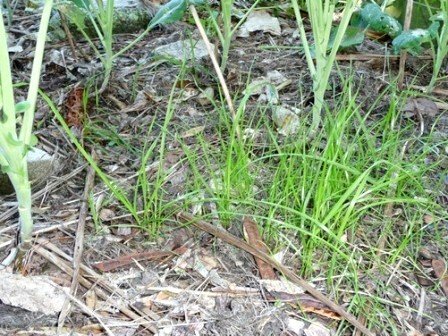
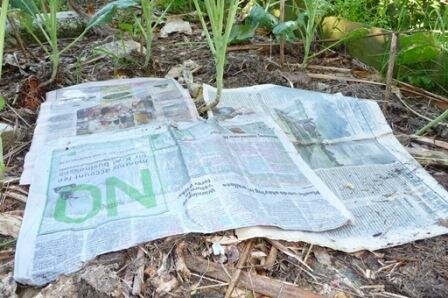
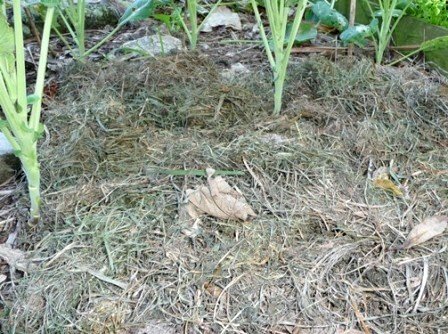
Vinegar as a Home-made Weed Killer
Vinegar is probably the most well-known way to kill weeds naturally. It may take half a dozen, more or less, applications, but the plant will give up eventually. The surrounding soil pH may lower slightly if you spill some, but research shows that it will be back to normal within a week if you use ordinary household strength vinegar.
Common old grocery white vinegar containing 5% acetic acid is fine. If you can get a stronger 15-20% food grade solution it will work even better and need less applications.
Research has shown that vinegar with 20-30% or more acetic acid concentrate actually works differently. If the ground surrounding difficult weeds is saturated with this strong vinegar, it will lower the soil pH to such low levels as 3, which stops ANYTHING growing.
Microbes and soil biota will be safe and will go dormant until the pH comes back to normal over time, unless lime is added to speed it up.
This harsh vinegar is apparently left over from the wine industry and should only be used with such tough weeds that are normally almost inaccessible and away from growing areas, such as blackberry, bamboo, ivy and so on.
Acetic acid acts as a desiccant. It burns the leaves, draws out moisture and destroys the plants' cell membranes. The leaves, stems and any other plant part it reaches will immediately die by simply drying and shrivelling up.
Handle carefully and don't get any in your eyes. Any acetic acid concentration over 10% will also burn skin, and be especially dangerous to eyes.
HOW to use vinegar for weeds:
- Into a sprayer or squirter bottle, pour 1 litre of vinegar.
- Add a short squirt (about ½-1 teaspoon) of natural liquid soap to help the vinegar stick to the plants.
- To give extra oomph, you can put in 5 drops of an herbicidal essential oil such as citrus, clove, thyme or cinnamon oil.
- Put on lid and shake well, then apply to weeds.
Boiling Water to Get Rid of Weeds
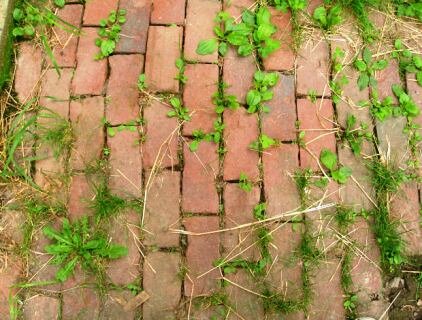
This is such a handy way to keep on top of awkward weeds that, unless you're short of water, it's worth getting into the habit of using up any leftover water from boiling your kettle or eggs each time.
Be careful of your hands and feet, and keep children and pets away. Go slowly and concentrate when carrying the hot container.
HOW to boil a weed:
- Let's say you've made some tea. Grab the jug and go outside and dribble the last of the hot water on that weed poking up by the drain... or by the side of the driveway.
- Or you notice some patches of newly sprouted grass or weed seeds in the middle of the gravel path. Boil up the kettle or pot and pour a thin trickle over this unwanted greenery. This should also kill some surface un-sprouted seeds too.
Flame and Steam to Kill Weeds
There's nothing more satisfying than to watch something annoying in your life (weed), curl up its toes in a puff of smoke or hiss of steam.
Small weeds or a row of weeds on the edge of your garden, can be carefully annihilated, poof... just like that, with a quick pass of a propane flame, or steam gun.
The heat boils the water in the plants' cells which causes them to burst and die.
HOW to kill weeds with a propane torch (sometimes called vapor or flame torches):- Important: Choose a time after rain or at least when any nearby plants or mulch are soggy and wet. Also have a water hose handy and if possible a friend to follow you to dowse any sparks.
- For small gardens you can buy cans with the torch on the end. For larger areas there are propane tanks, like barbeque tanks, with a long gas hose and torch attachment which you may need a trolley/barrow/dolly to cart around.
- Simply do a quick swipe over the weeds, which will immediately boil the water inside the plants' tissues. Don't linger as it's not necessary to burn them any longer and turn them into chips.
- Another reason for a quick swipe is that you may have nice bricks or pavers nearby and you don't want to scar or heat these up... so just move the end of the flame back and forth, skimming the surface without stopping.
HOW to kill weeds with steam:
- A steam machine can be used as a weed control machine too. These machines are hired or sold for steam cleaning moss, mould, carpets, floors, yards, etc, and to steam old wallpaper off walls.
- It is best to use steam to kill weeds in large area, like yards and driveways. If you need to protect a plant, cut out the bottom from a large can, soda bottle, old hot-water bottle, bucket or something suitable, and put over plant.
- Hot steam is also very effective for going all the way, or a long way to eradicating woody weeds. As above, but this time put the protection (can, bucket, bottle etc) over the weed you want to destroy, then direct the steam into it. This stops surrounding plants from being harmed, plus concentrates the steam into one powerful spot.
- Wear shoes and cover up bare skin. Be careful of the cord to the electrical output, and keep pets and children away.
Oil to Eradicate Weeds
Oil suffocates plants so it makes a great herbicide. Some oils also strip the surface of the leaves which then dehydrates the plant.
Cheap vegetable oils, such as canola and sunflower are biodegradable and will be broken down by soil bacteria.
Gasoline, old engine and diesel oil are toxic to the soil, so don't use these on garden weeds unless they are in an area you will likely never need to grow other plants, such as a concrete drive, carport, tennis court, pavement etc. These used motor oils are like black mud... filthy as... well, old engine oil, and will leave a very dark stain.
Many herbal and plant oils contain natural pesticide and herbicide properties. They can be mixed with other substances such as vinegar and soap to safely eliminate weeds. These oils are often found in organic preparations in garden shops, and include d-limonene, or citrus oil extract, neem oil, castor oil, pine oil, cinnamon, clove and thyme oil. Cinnamon for example contains eugenol, a particularly potent herbicide.
HOW to kill weeds with oil:
- Dribble the oil you have chosen or the homemade mixture containing oil, onto the weed so that it coats and smothers it.
- With such weeds as oxalis/soursobs trickle enough oil onto the plant and any bulbils you can see or disturb, so that they are smothered.
Organic Weed Control—By Hand or Hoe—ho hum
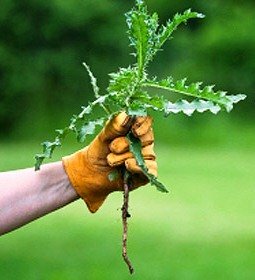
When the going's tough, the tough get going, so they say. Where are 'they' though to come and help?
Many people, and me too, find a spot of weeding rather pleasant. Little and often is good; never is better say some! I say enjoy...
HOW to control those weeds before they control you:
- If your garden is in full production mode, say in mid-summer, you don't want to disturb your veggies, flowers and soil structure by yanking or digging out stubborn large or deep weeds.
- So in some cases if you have a serious weed problem amongst the vegetable patch, at least make sure you cut off all flower and seed heads of weeds to stop them reproducing.
- And if necessary, you can carefully strip down any weedy stems and leaves that are crowding out your good plants, then after harvesting, you can fix the regrowth and roots for good.
- Otherwise for normal weeding, the best time is when the soil is damp or wet. Give a pull and most weeds glide out like a figure skater. Use a trowel or little weeder tool to help if needed.
- Carry a box or bucket and put the weeds in and dump in compost or where you want them to rot, or make weed tea.
- OR choose a sunny day and leave them on the ground, roots upturned to fry in the sun.
- If you hoe weeds, just disturb an inch or two of soil and let the sun bake the broken weeds, then go over again for any resprouting ones.
- Some people practice weed control by turning over any clods of weeds, such as grass clumps or thickly matted weeds and leaving them upside down. Then the plot is quickly planted up with an aggressive crop, like spuds, which grow and are harvested all before any of these topsy-turvy weeds find their feet again.
- Weeds with bulbs, such as onion weed and oxalis/soursobs are best methodically removed with a trowel, plant by plant, bulb by bulb (sob, sniff).
- With oxalis it's best to dig out that long soft root in spring before it forms those ratbag baby bulbs. Also at this time the ground should be damp and easy to work.
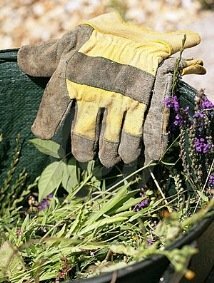
- If you don't get all the bulbs, keep at it and any time you see those leaves poke their pretty little heads up, send them to their next life. Also use the oil technique—as described above.
- Large woody weeds, like ivy and other vines, plus weeds with tap roots will need to be dug out with a spade.
- Enjoy—it's so much better, cheaper and more useful than going to the gym for exercise!
Other natural weed control methods (chickens, tilth, overplanting, solarisation etc)
Soaps: Herbicidal soaps are sold to kill weeds. They work well and you can also use them as a base then add other ingredients, such as essential oils, to enhance their power.Herbicidal soaps (Ammoniated Soap of Fatty Acids or potassium soap of fatty acid) are harmless to the environment, and they work by stripping the surface coating on leaf surfaces, causing desiccation or dehydration.

Chickens: Darling creatures and so good at scavenging in the garden and lightly tilling the soil... as well as egg laying.
If your chickens run free, it's best to have them under fruit trees or in bushy garden, because anything else will be undermined in the search for little critters, or eaten because of the nice green leaves and seeds.
For garden use, either make or buy a moveable frame house of chicken wire with wheels on one end, that is just big enough for a few chickens and light enough to move around the garden (a small, easy to make A-frame works well).
Of course, at the end of summer, you may want to let your chickens run amok and clean up the garden, weeds and pests alike, before you do what you want to do for winter. Chickens will happily scratch and peck out weed bulbs and bulblets, going deep for this treat.
Tilth and sun: This is a favourite organic farmer's or market gardener's way to control weeds, but home gardeners can use the idea successfully.
Tilling, even lightly, does expose buried seeds that may burst into life when they get air and light, so keep your cultivation shallow.
Lightly run a shallow tilth machine or hand tool over the soil, exposing and if possible turning over any weeds, then leave the sun to bake the living daylights out of them.
Although it's not the real deal, no dig way, these new machines are earth friendly enough to just go through the top layer without upsetting the living layers of soil that have built up over time.

Corn Gluten to Stop Weed Seeds Growing
Corn gluten is called a pre-emergence weed killer... it's definitely the sharpest trick in the box for stopping seeds from sprouting. It is a natural by-product of processing corn or maize into corn meal, which is used in foods like chips, tacos, animal and pet foods.
Like a one-armed paper-hanger, corn gluten is useless for most things… except for those lurking weed seeds. It has an oily coating and inhibits the formation of roots.
It does not harm existing plants and as a bonus this weed seed terminator has high nitrogen content, so it feeds your soil as well.
Corn gluten is available at stockfeed outlets and garden centres. You may have trouble finding an organic, that is non GMO supply.
HOW to use Corn Gluten to prevent weed seed sprouting:
- In early spring and again late summer if necessary, sprinkle over area where weeds were or you know there are unwanted seeds. Use according to packet instructions or at 1 kg per 9.30 square meters (2 lbs/100 sq ft).
- Rake lightly in, or if putting down paver cracks, sprinkle with sand of gravel to stop it being washed out.
- Wait 6 weeks before the corn gluten has completely broken down before you sow desirable seeds.
Doubtful or dangerous dudes for killing weeds
Salt: Vast amounts of salt are spread in countries to melt snow which covers roads and pathways that are essential for transport use. This salt often washes onto the land and can cause high soil salinity which limits many plants from growing.
This salt also slowly leaches down and finds its way to the lowest levels going into rivers, lakes and the sea. It causes harm to water life both flora and fauna, as well as promotes unwanted water weeds and algae.
Salt (sodium chloride) is natural, but it doesn't biodegrade, so if you want to use it on some weeds, do so sparingly and only on spot weeds in difficult places or in cracks in paths or driveways. Make sure your vegetables and other prized plants are not growing down the line or nearby as they may suffer.
Plastic: Nuking weeds with plastic works brilliantly... unfortunately. Plastic is a wonderful invention, but like many wonderful things, it gets abused, overused and the unintended consequences thunder in... and in plastic's case, it is clearly becoming a no-brainer shocker of a problem.
Stepping off my platform for a moment, I'm not against using plastic, BUT only used plastic. I don't buy new plastic, unless there's no alternative (think, my computer). I try to avoid plastic packaging, and I certainly will not buy any of these plastic weed mats, grow bags and other garden stuff.
But by all means, like me, make use of other gardeners' hand-me-downs. If you find a pile of plastic plant pots, some polystyrene seed trays, plastic mesh, sheeting, and any of the 101 other plastic fantastic paraphernalia going begging—grab it and give it another use.
HOW to use plastic sheeting for soil solarization:
- Soil solarisation kills weeds and can actually sterilize the soil and kill all life if hot enough. You need plenty of sun for this method to work.
- There is some debate about the merits of black or transparent plastic. Transparent plastic lets the light in so will encourage the weeds to grow initially, but only for them to get severely burnt by the direct sunlight... as well as allowing heat to build up under the clear plastic. Black plastic absorbs the heat, blocks the light and cooks the weeds and soil underneath.
- If you use transparent plastic, have the weedy area as dry as possible, so that those weeds have to cope with lack of water as well as heat.
- With black plastic it's more effective to wet the area first to help really stew the weeds.
- Whichever you use, lay the sheet, or large bags over the area of weeds you want to kill. Overlap generously and secure with rocks, bricks, boards, wire pins or whatever is heavy enough. Pile soil around the edge if you can. The closer to the ground you can make the plastic, the less air there is for the struggling weeds.
- After a month or more in good hot sun, you may be able to see enough damage so that you can now make your garden there. A hand's length down should be dead as a dodo, roots and all.
- In some climates, and especially with deep rooted crab, elephant, kikuyu type grasses, you may need to leave the plastic there for up to a year for total weed control. Keep your eyes open to grass tentacles surfacing many meters away, even under driveways!
Happy weeding,
Now all you have to worry about is a small equation,
which goes something like this. . .
Wind plus birds plus neighbors = Neighborly weeds dropping in for a visit.
